 Homeschooling can cost a fortune if we’re not careful. A textbook plus the answer manual, teacher’s manual and test booklet can easily run over $200! And that’s just for one grade level and one subject. Good grief! Do they think we’re all growing money trees in the backyard? I live in a single income household and there is no way on God’s Green Earth that I can afford to spend as much on homeschool supplies as I’d like to. Since buying whatever strikes my fancy is not an option I have decided to seek out as many free online resources as I can find. There are literally thousands from which to choose. Since there’s no way I can use everything available I have chosen to focus mainly on texts in the public domain with minor reference to a few other significantly useful sites.
Homeschooling can cost a fortune if we’re not careful. A textbook plus the answer manual, teacher’s manual and test booklet can easily run over $200! And that’s just for one grade level and one subject. Good grief! Do they think we’re all growing money trees in the backyard? I live in a single income household and there is no way on God’s Green Earth that I can afford to spend as much on homeschool supplies as I’d like to. Since buying whatever strikes my fancy is not an option I have decided to seek out as many free online resources as I can find. There are literally thousands from which to choose. Since there’s no way I can use everything available I have chosen to focus mainly on texts in the public domain with minor reference to a few other significantly useful sites.
Public domain works include those that were published before 1923. They are now copyright-free. This means that the public may download, print, copy and reproduce these texts in any way they please. For instance, these books can be printed out and used in a small new homeschool that is low on cash but high in creativity. Eureka! A solution presents itself.
My kids respond best to a balanced combination of textbooks & living-books.
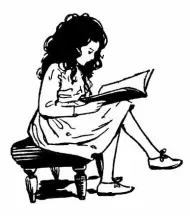 I prefer to teach with a balanced combination of textbooks and so-called living-books. The term living-books was coined by the great educator Charlotte Mason. It refers to books that are fun and interesting to read, books that draw the reader into the plot and educate while entertaining. I learned this at a wonderful site called Ambleside Online. They have a high-quality, free curriculum that follows Charlotte Mason’s principles of education, essentially producing a thorough and well-rounded liberal arts course of study. This curriculum is built largely, but not completely, on public domain texts. I considered using Ambleside Online exclusively but soon realized that it isn’t structured enough for my boys, who came out of a public school setting.
I prefer to teach with a balanced combination of textbooks and so-called living-books. The term living-books was coined by the great educator Charlotte Mason. It refers to books that are fun and interesting to read, books that draw the reader into the plot and educate while entertaining. I learned this at a wonderful site called Ambleside Online. They have a high-quality, free curriculum that follows Charlotte Mason’s principles of education, essentially producing a thorough and well-rounded liberal arts course of study. This curriculum is built largely, but not completely, on public domain texts. I considered using Ambleside Online exclusively but soon realized that it isn’t structured enough for my boys, who came out of a public school setting.
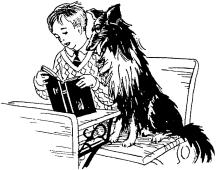
So instead, I went in search of educational resources that would allow me to customize a program that would suit the needs of my children and still accommodate my pocketbook. After examining online sources of public domain texts like Project Gutenberg, Online Books Page, Internet Archive, Baldwin Project and Christian Classics Ethereal Library I realized that the main drawback to my endeavor is the sheer quantity of books available. I needed to develop a plan of organization and determine which elements to teach in which grade. This site serves as my main organizational system. Categories are listed on the left-hand side of the page. Click on a category to go to that page. Each page has a list of links to books and/or websites in that subject. Some links suggest an appropriate grade level and others do not. A quick glance will show you that there are more than enough books already online to give a thorough education to anyone, from Kindergartners up to graduating Seniors. Plus miraculously, more appear every day!
I also want to share with you educational kits for children that help with learning.
Additional Advantages to Public Domain Texts, Besides Being Free
While working with these older texts, I’ve discovered that they have a few advantages over modern books. First off, they have high expectations for their readers. These books haven’t been dumbed-down to a lower standard or watered-down to politically correct pabulum. Since most children will perform according to their parent’s expectations, it is vital that we maintain high educational standards. These books help parents achieve that goal.
Also, since most of the books are available in simple text format, I can open them up in my favorite word processing program and tweak them to suit my fancy. If I like, I can print only a few pages or even a few paragraphs. There is no rule that each book must be printed out in its entirety and used from beginning to end. I can take the best parts from 3 or 4 different texts and make my own composite that is custom-created for the needs of my children and our curriculum. This provides a lot of leeway that I wouldn’t have if I were using modern textbooks. If you have children who are frightened by, uncomfortable with, or simply too young for certain story elements, then you may edit these elements out of a text before printing it. We needn’t be afraid to customize our children’s books when we deem it necessary. Our own children’s welfare is far more important than critics who would cry censorship over the simple act of editing a homemade book for a sensitive child.
Old Fashioned Christian Morals & Character
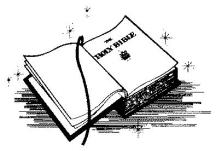 Another quality found in older books is that they were written at a time when God and the Bible were an assumed part of daily life. This contrasts sadly with our current situation where the mere mention of God, Jesus, Christianity or the Bible will get a book banned from the public school curriculum in a heartbeat.
Another quality found in older books is that they were written at a time when God and the Bible were an assumed part of daily life. This contrasts sadly with our current situation where the mere mention of God, Jesus, Christianity or the Bible will get a book banned from the public school curriculum in a heartbeat.
Morality in most older books is based firmly upon the Holy Inspired Scriptures. Heroes and heroines in these books, both fictional and historical, often quote bible verses and refer to bible stories. Qualities such as honesty, cooperation, perseverance in times of trouble, respecting one’s elders, forgiving others, and being kind to one’s siblings are encouraged and rewarded. We see characters struggle with everyday temptations; then we discover how they overcome their situations and rise above their carnal nature. What a refreshing change this is compared to modern literature. I want my children to have good examples of moral behavior. I want them to read books that show the consequences of immorality on a level that they can grasp, remember and ponder in their quiet moments. These books give children something to aspire to as they grow older and set standards that will be remembered for the rest of their lives. If I limited myself to recently published books for my children’s education I’m afraid that I would have to look long and hard to find modern equivalents with similar moral standards.
Good Books Instead of Video Games & Television
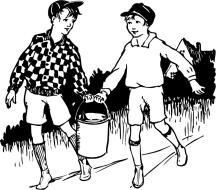 Additionally, I’ve found that teaching children from these types of materials brings balance to their fast-paced lives. Today’s children are exposed to more technology than we even dreamed of 10 or 20 years ago. With virtual reality, computerized gadgets, cable television, and video games, children are tempted to see the world through a technological filter. I believe this glut of technology distorts one’s perspective and manifests a distinct disadvantage in problem-solving skills. By exposing my children to perspectives that are not built on technology I am allowing them to broaden their worldview and diversify their ability to seek solutions. Most of the books we use are from a time when technology was in it’s infancy. Characters in these books don’t use technology as a crutch when they seek to overcome their challenges. Instead, they must use genuine human ingenuity and sincere Christian faith to solve their problems. As parents, it is our job to give our children a balanced understanding of the modern world. They need to understand that life hasn’t always been the way it is now and that the lifestyle we have in the United States today is not shared by most of the Earth’s inhabitants. By using these books, children are able to form a firm, biblical foundation, allowing them to become less reactionary to society’s current ills. They are aware of their alternatives and are less vulnerable to the temptation to recklessly follow the crowd.
Additionally, I’ve found that teaching children from these types of materials brings balance to their fast-paced lives. Today’s children are exposed to more technology than we even dreamed of 10 or 20 years ago. With virtual reality, computerized gadgets, cable television, and video games, children are tempted to see the world through a technological filter. I believe this glut of technology distorts one’s perspective and manifests a distinct disadvantage in problem-solving skills. By exposing my children to perspectives that are not built on technology I am allowing them to broaden their worldview and diversify their ability to seek solutions. Most of the books we use are from a time when technology was in it’s infancy. Characters in these books don’t use technology as a crutch when they seek to overcome their challenges. Instead, they must use genuine human ingenuity and sincere Christian faith to solve their problems. As parents, it is our job to give our children a balanced understanding of the modern world. They need to understand that life hasn’t always been the way it is now and that the lifestyle we have in the United States today is not shared by most of the Earth’s inhabitants. By using these books, children are able to form a firm, biblical foundation, allowing them to become less reactionary to society’s current ills. They are aware of their alternatives and are less vulnerable to the temptation to recklessly follow the crowd.
A final benefit to old books is that when they have been around long enough to make it into the public domain today, then one can bet that they are books worth reading. Simply put, poorly written books do not stand the test of time. As less worthy reading material is sifted out, worthy specimens rise to the top. These books represent the cream of the crop. They stand ready to educate, inform, enlighten, even anger, and confound a brand new generation. The books may be old, but the information they impart and the stories they tell are timeless.
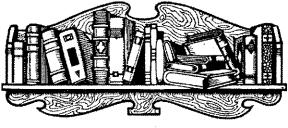
Proverbs 22:6 Train up a child in the way he should go: and when he is old, he will not depart from it.
My Thoughts on Homeschooling & Curriculum
Religious Exemption in VA, sample letter
Teaching Religion & Bible Study
A Few Notes
1. Grammar School or Grammar Grades in America refer to the grade levels from Kindergarten (usually ages 5-6) or 1st grade (ages 6-7) up to 8th Grade (ages 13-14). Sometimes these are called the primary grades. High School or Secondary Schools refer to grades 9 (age 14-15) through 12 (age 17-18). For more information about American grade levels click here.
2. The books are arranged in categories. For navigation purposes, categories are listed alphabetically on the left-hand side of the screen. Some, not all, of the books have general reading levels appearing below the book title. They are listed by grade and are only meant as a guide. These reading levels are not written in stone. You know your children better than anyone else, so use your best judgement.
3. Most of the texts appearing here are from the Gutenberg Project. Almost everything from their site is public domain and may be downloaded, printed and used as desired. Books on some of the other sites may be viewable by page or chapter, but may not have full text versions available. For help with these sites see Printing Tips.
4. I have not been able to read every word in every book that is listed on this site. There will probably be a few that are not appropriate for all children. Remember to preview books before allowing your children to chow down whole hog. Nothing can replace the ever watchful eye of a concerned parent.
5. Despite the fact that I am a supporter of the old education, I am not at all against modern gadgets in training. For example, I use a laptop, a smartphone and a camera to record my lectures and those of my colleagues. Thanks to Science and Literacy website, I found my best camera for classroom recording. To record lectures in the classroom, I use the Sony FDRAX53/B model. I also sometimes conduct online lectures and I ordered a Logitech StreamCam to record them. I am quite satisfied with the work of both devices, I am waiting for your letters about your favorite gadgets for teaching.
For video recording, I use not only a camcorder, but also a voice amplifier. Unfortunately, I have a very weak voice, which often disappears by the end of the lesson. My honest recommendation to all teachers is the WinBridge WB001 model, which I’ve found in this article. This device helps me to be heard throughout the entire video lecture.
6. Unless specifically stated to the contrary, everything hosted on this site is believed to be in the Public Domain, if anyone can prove otherwise please contact me and arrange to fax me the proof. When you follow links to other sites, please read and follow their copyright policies. Thanks & Enjoy
— Miss Mary

. . . that the children will grow up to be fine young men who love the Lord and are able and willing to work in His Kingdom — Darthulia
Deuteronomy 6:7 And thou shalt teach them diligently unto thy children, and shalt talk of them when thou sittest in thine house, and when thou walkest by the way, and when thou liest down, and when thou risest up.
Psalms 132:12 If thy children will keep my covenant and my testimony that I shall teach them, their children shall also sit upon thy throne forevermore.
Blog
- Blog Posts
- SEO Strategies for Private Schools
- Saxon Math vs Singapore Math
- Airplane Kit for Kids
- Volcano Kits for Kids
- Candle Making Kits for Kids
Curriculum
- Full Curriculum
- Kindergarten Curriculum
- 1st Grade Curriculum
- 2nd Grade Curriculum
- 3rd Grade Curriculum
- 4th Grade Curriculum
- 5th Grade Curriculum
- 6th Grade Curriculum
- 7th Grade Curriculum
- 8th Grade Curriculum
- 9th Grade Curriculum
- 10th Grade Curriculum
- 11th Grade Curriculum
- 12th Grade Curriculum
Book Selections
- American History
- Anthologies
- Arithmetic
- Arithmetic & Mathematics
- Art Appreciation
- Biography
- Canadian Interest
- Canadian Teacher’s Manuals
- Character & Etiquette
- Christian Classics
- Civics & Government
- Classic Literature
- Composition
- Drama & Public Speaking
- Economics
- Emergency Preparedness
- Fables, Fairy Tales & Nursery Rhymes
- Fiction for Boys
- Fiction for Girls
- Folk Songs & Hymns
- Geography & Social Studies
- Spelling & Grammar
- Greece & Rome
- Health
- Helps for Mom & Dad
- Historical Documents
- Historical Fiction
- Holidays
- Home Economics
- Latin & Foreign Languages
- Medicine & Nursing
- Music Appreciation
- Penmanship
- Philosophy
- Poetry
- Printing Tips
- Reading Basics
- Recreation
- Reference Books
- Science & Nature
- SciFi & Ghost Stories
- Shakespeare & Plutarch
- Virginia
- World History
- Women’s Studies
